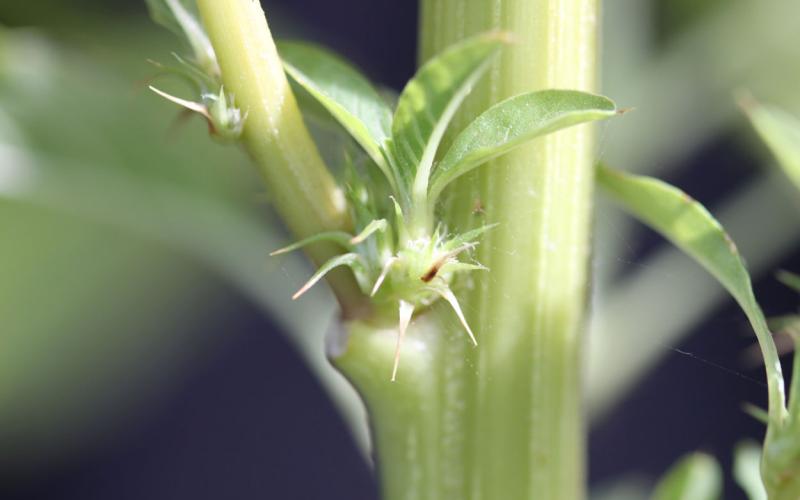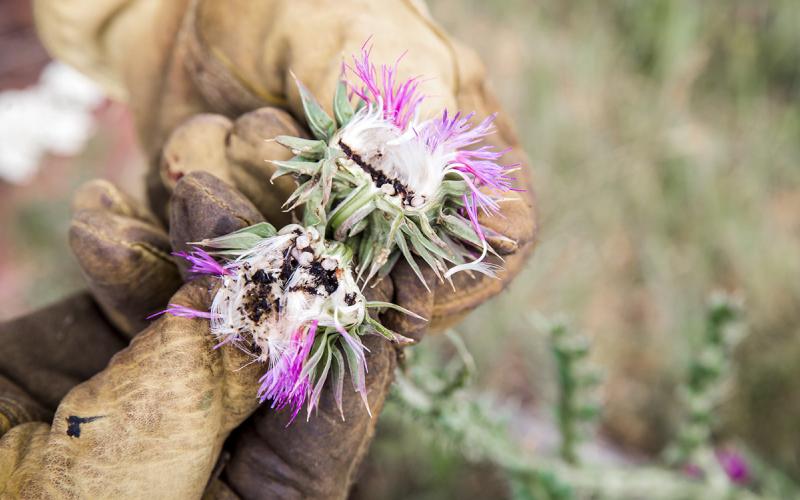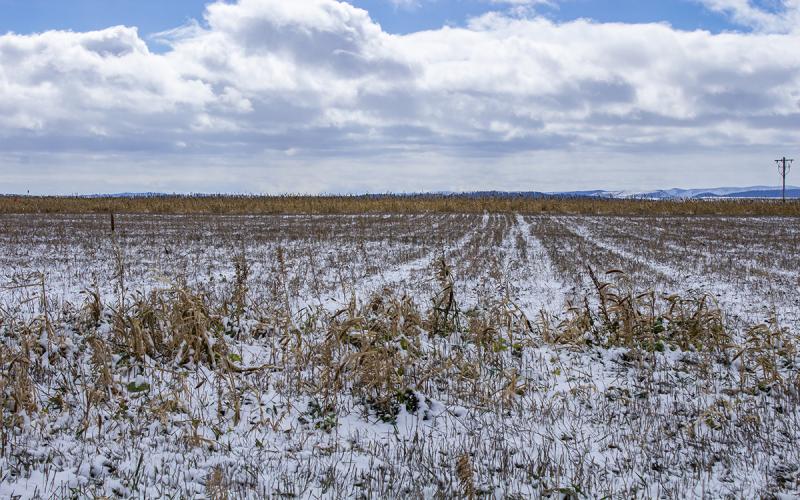Non-native weeds have been introduced to crop fields by migrating wildlife, contaminated native plant seed for pollinator and wildlife habitats, and purchased machinery contaminated with weed seeds from outside our region. Palmer amaranth has encroached crop fields in South Dakota, where the plant is not native. Since a variety of “pigweeds” have emerged in crop fields across South Dakota, now is the time to determine which weed is present.
Amaranth Species Identification
Palmer amaranth (Figure 1) shares common vegetative characteristics between other amaranth species common in South Dakota, including waterhemp (Figure 2) and redroot pigweed (Figure 3). The most practical way to distinguish palmer amaranth from waterhemp is the length of the petiole. The petiole of palmer amaranth is usually greater in length when compared to the leaf. Redroot pigweed can be distinguished from palmer amaranth and waterhemp by the pubescent covering of its stems, whereas palmer amaranth and waterhemp plants are glabrous.
Palmer Amaranth
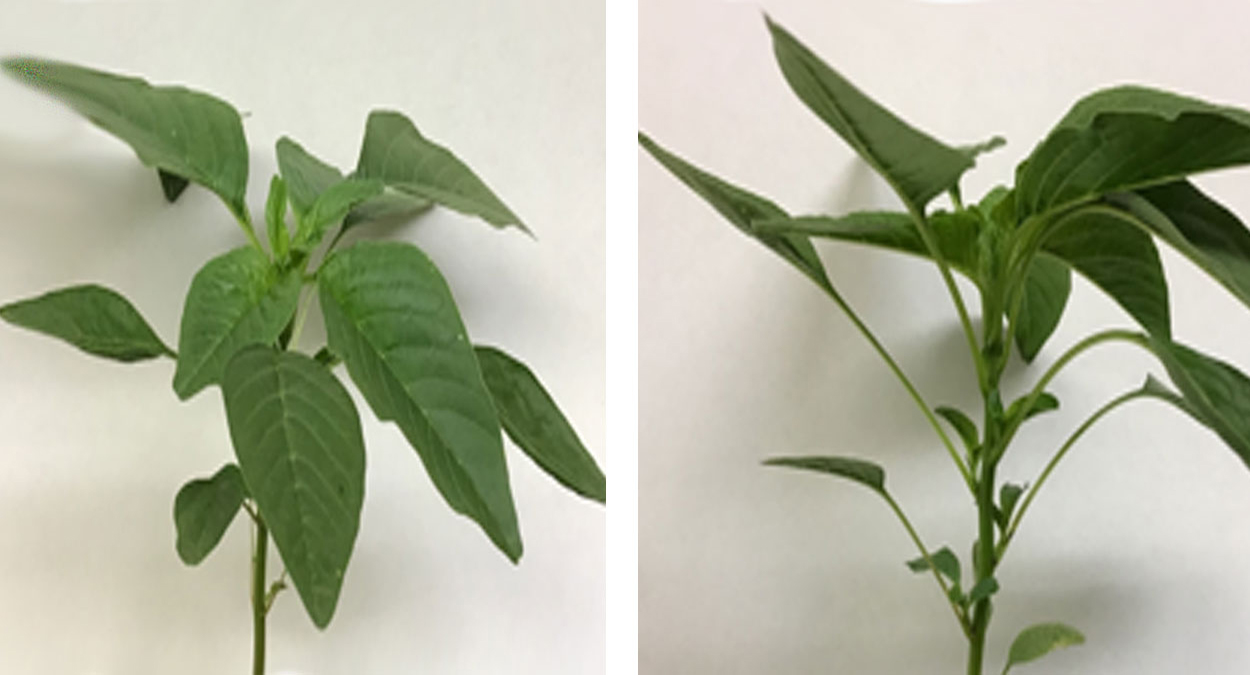
Waterhemp
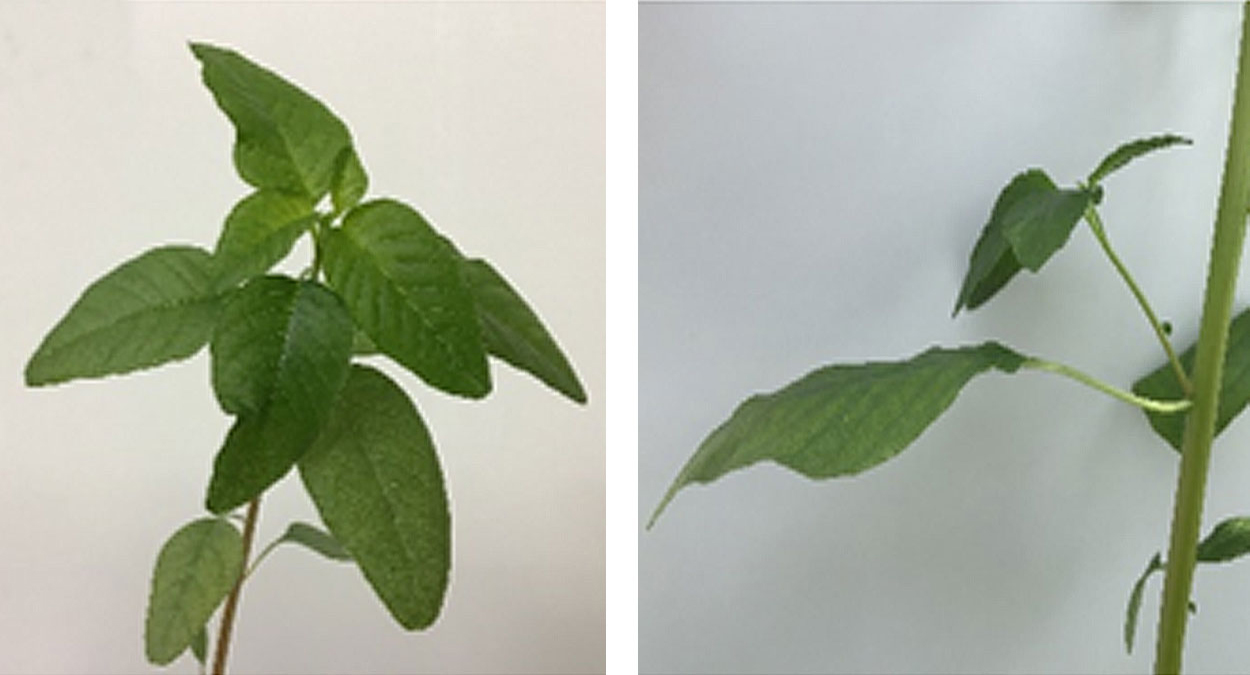
Redroot Pigweed
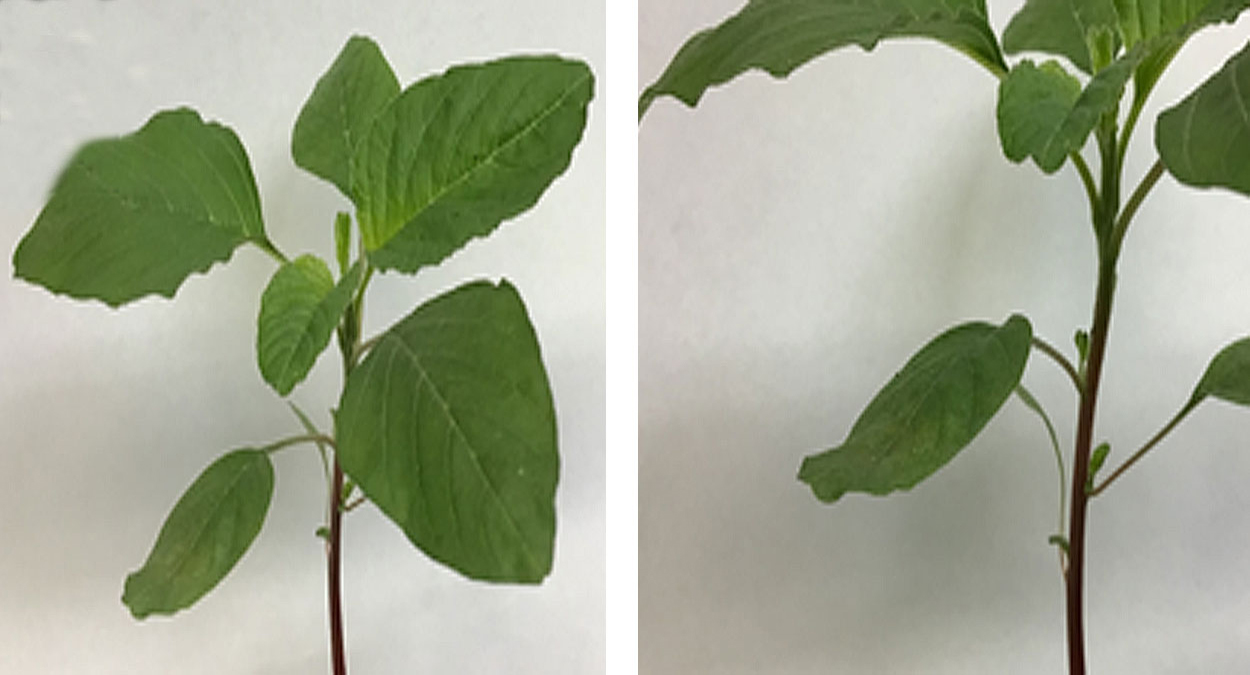
While identification of the three species is easiest when flowers are present, plants should not be allowed to mature to this point, as crop yield loss has been realized and seeds are likely already produced. Careful identification must be made early so palmer amaranth can be eradicated from isolated fields and cease spreading to other fields and regions.
